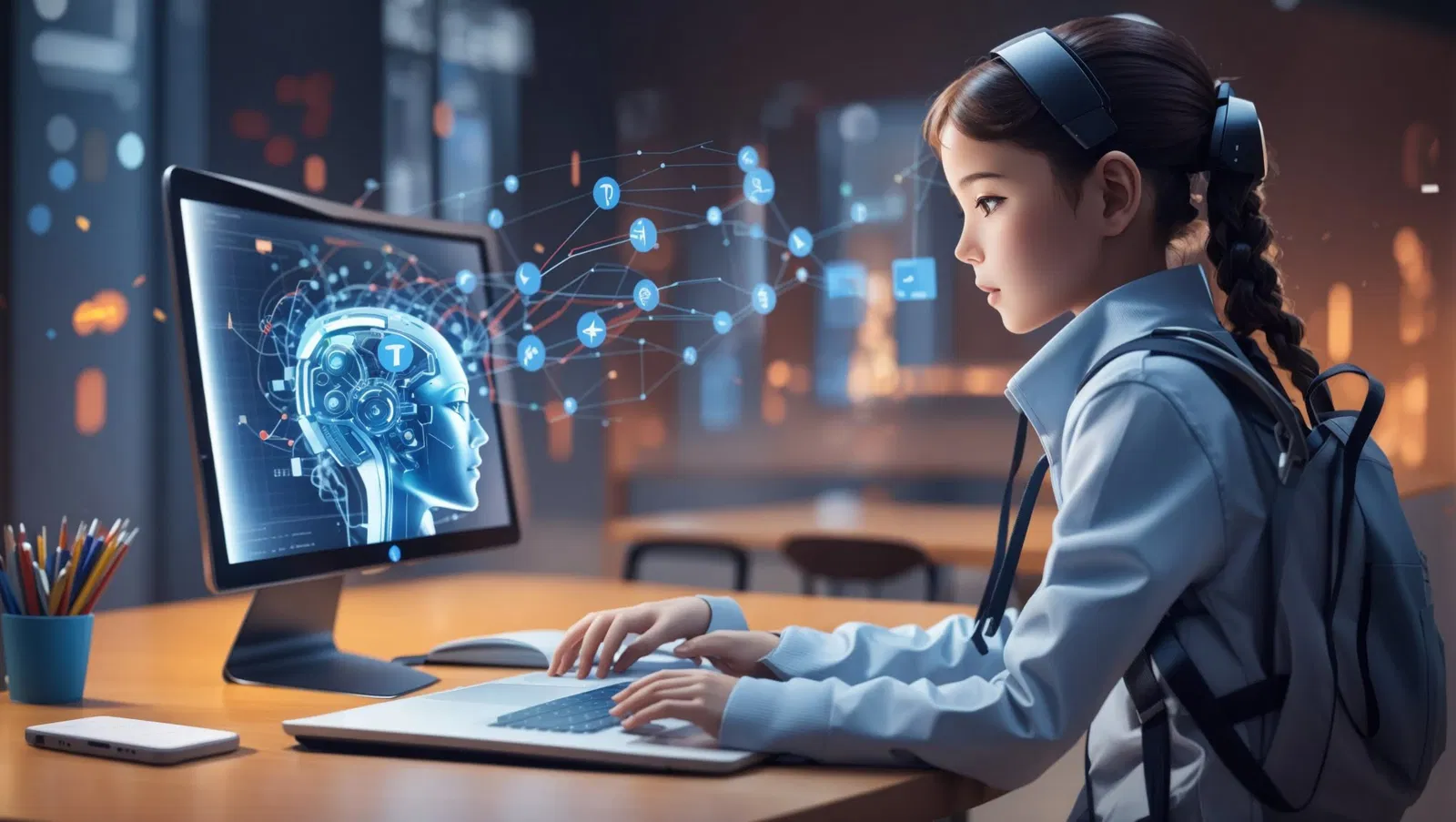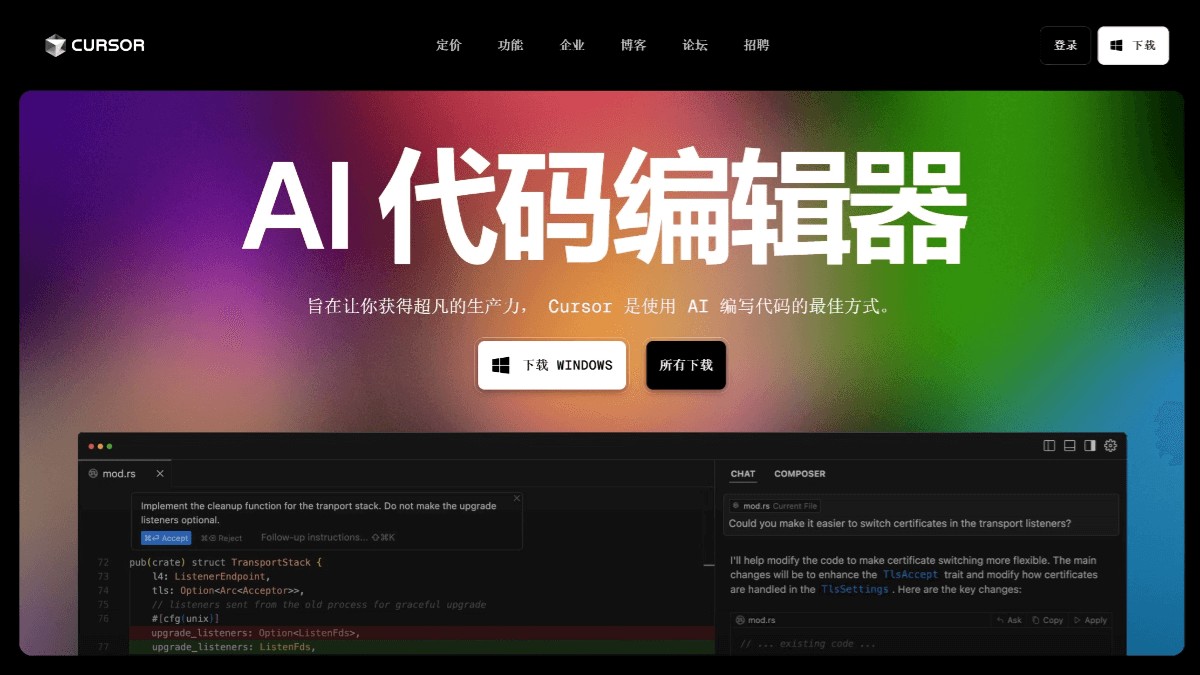
The application of AI (artificial intelligence) in education is developing rapidly, and more and more educators are beginning to realize its huge potential for teaching effectiveness, learning efficiency, and student experience. This article will introduce the application of AI in education, including how AI can help teachers improve teaching quality, personalize learning, and better manage classrooms.
What is artificial intelligence in education?
Artificial intelligence in education refers to the use of computer systems to perform tasks that typically require human intelligence, such as:
Learn and adapt: Analyze student data to identify learning patterns and adjust teaching methods accordingly.
Problem Solving: Develop intelligent tutoring systems to provide personalized feedback and guidance.
Natural Language Processing (NLP): Understanding and processing human language for tasks such as automated essay scoring or chatbot interaction.
Computer Vision: Analyzes images and videos for tasks such as identifying student engagement or assessing physical skills.
How can artificial intelligence help teachers?
Personalized learning: AI can analyze student performance data to identify individual learning gaps and recommend customized learning paths, resources and activities. This enables teachers to differentiate instruction more effectively. For example, based on the types of mistakes students make in exercises, targeted exercises or explanation videos are recommended.
Automated grading and feedback: AI tools can automatically grade objective assessments (multiple choice, fill-in-the-blank) and provide feedback on written assignments, freeing up teachers’ time for more personalized teacher-student interactions. For example, it automatically corrects objective questions and provides modification suggestions on grammar, spelling, etc. for subjective questions.
Administrative tasks: AI can reduce the administrative burden on teachers by automating tasks such as attendance tracking, class scheduling, and report generation. For example, automatically record student attendance and generate relevant statistical reports.
Identify at-risk students: AI can analyze student data to identify students who may be struggling academically or socially, allowing teachers to intervene early and provide support. For example, by analyzing data such as students’ homework submissions and class participation, we can predict whether students are at risk of learning difficulties.
Create engaging learning experiences: AI can be used to develop interactive simulations, virtual field trips, and other engaging learning experiences that cater to different learning styles. For example, virtual reality technology can be used to lead students to conduct virtual museum visits or reenact historical scenes.
Data Analysis and Insights: AI can analyze large amounts of student performance data to provide teachers with insights into student learning trends and the effectiveness of different teaching strategies. For example, analyzing students' scores on different question types can help teachers understand students' weak areas and adjust teaching priorities.
Examples of artificial intelligence tools commonly used by teachers:
Personalized learning platforms: Platforms like Khan Academy, Duolingo, and Yixue Education use artificial intelligence to personalize learning paths.
Automated grading tools: Like Gradescope and Google Classroom provide automated grading and feedback capabilities.
Plagiarism Detection Software: Turnitin uses artificial intelligence to detect plagiarism in student writing.
Chatbots and virtual assistants: Some education platforms use chatbots to answer student questions and provide support.
Challenges and considerations:
Data Privacy and Security: Must ensure that student data is collected and used in an ethical and secure manner.
Bias in algorithms: If an AI algorithm is trained on biased data, it can perpetuate existing biases.
Teacher training and professional development: Teachers need training and support to effectively use AI tools in the classroom.
The Importance of Human Interaction: AI should be used to enhance, not replace, human interaction in the classroom. The teacher-student relationship remains critical to effective learning.
Cost and accessibility: Access to AI tools can be a barrier for some schools and districts.
Key takeaways from “AI for Teachers 101”:
Artificial intelligence has the potential to transform education by personalizing learning, automating tasks, and providing valuable insights.
Teachers play a vital role in the effective implementation and use of AI tools.
Ethical issues such as data privacy and bias must be addressed.
The focus should be on using AI to enhance rather than replace the human element of teaching and learning.
By understanding the basics of artificial intelligence and its potential applications in education, teachers can begin to explore how these technologies can be used to improve teaching and learning outcomes for all students.
The application of AI (artificial intelligence) in the field of education emphasizes how to effectively integrate artificial intelligence into teaching practice to better serve students and reduce the burden on teachers, with the ultimate goal of improving the quality of education.



